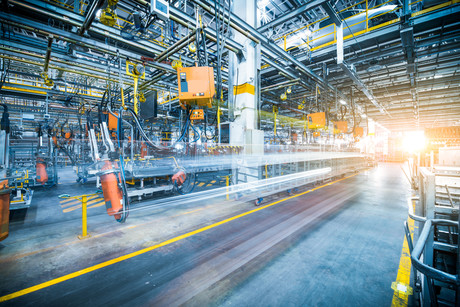How to bridge the industry-wide knowledge gap

As the pivotal baby boomer generation of factory workers starts to retire, manufacturing organisations face challenges around retaining their valuable skills, experience and knowledge. The generation born in the wake of the Second World War has seen dramatic changes in the industry, from concepts such as lean manufacturing to today’s Industry 4.0 approach. Replacing them will likely create a significant challenge for businesses.
The timing of these retirements comes as the manufacturing industry resurges, creating strong opportunities for businesses that are equipped and resourced to take advantage of them before their competitors do. According to the Australian Industry Group’s (Ai Group’s) Performance of Manufacturing Index, Australian manufacturing has experienced growth for the past 21 months and is the strongest it’s been since 2005.1
Businesses therefore need to minimise the negative effects of retiring workers. They can do this, and get fit for growth, by upskilling existing employees and attracting talented young people to roles in the industry. While manufacturing was previously seen as a dirty, difficult and low-paying option, advancements in technology and processing can contribute to a change in perception, especially for young workers keen to work with emerging technologies.
For example, robots can help manufacturers maintain and improve production levels even as the number of skilled workers declines. And, because robots automate repetitive tasks and can undertake dangerous tasks instead of humans, they free up people to work on more creative tasks. The ideal factory worker of the future could, therefore, be a robotics and programming expert.
However, to make the most of robotics-based solutions, manufacturers need up-to-date IT infrastructure. Cloud-based enterprise resource planning (ERP) solutions are crucial for coordinating robot workflows and sharing data between machines and humans across multiple digital platforms.
In a recent study conducted by Epicor Software, 19% of respondents agreed that they rely on a single core business system to manage all operations.2 This streamlined approach minimises the risk of errors and gives business decision-makers a single source of truth to work from.
A good ERP solution should also incorporate analytics, which are crucial because they provide visibility into the information generated by machines, robots and artificial intelligence (AI) algorithms both within the business itself and across the supply chain. This, combined with a targeted Internet of Things (IoT) approach that uses sensors and machine learning to optimise operating conditions and automate even more tasks, can deliver a significant competitive advantage for manufacturers.
The Epicor study found that 41% of young people want the opportunity to work with the latest innovations and 20% of businesses believe that the chance to work with robotics and AI is a big draw for young talent. Millennials in particular want to be at the cutting edge of new developments, with one-third of those surveyed agreeing the chance to be at the cutting edge is attractive to them. Therefore, a new focus on data, analysis and technology could help attract young, tech-savvy people to manufacturing.
As more young people enter the manufacturing industry, businesses will be better positioned to leverage new and emerging technologies to operate more cost-effectively. Human resources can be freed up from the drudgery of mundane and repetitive tasks to contribute more meaningfully to the business with creative innovation. This approach will help bridge the skills gap presented by the exodus of older workers as they retire. Furthermore, it could help turn this exodus into an impetus for the industry to evolve at a faster rate, potentially leading to sharper competitiveness globally.
Manufacturers that leverage robotics, AI, the IoT and smart ERP systems will be the most attractive to younger workers. It’s up to manufacturing organisations to lay the groundwork now by implementing smart technologies and positioning themselves as employers of choice for tomorrow’s brightest talent. Doing so will help consolidate the industry’s recovery and position both the industry and individual organisation for future growth.
References:
- https://www.aigroup.com.au/policy-and-research/economics/economicindicators/
- The research was conducted by Morar Consulting on behalf of Epicor in December 2017. The research questioned 2450 business decision-makers and employees in businesses in 14 countries across the globe about their growth performance in the last 12 months.
The environmental impact of AI: a help or hindrance for industry?
AI offers powerful tools to improve sustainability in water, waste and energy systems, but its...
Securing industrial networks: three architecture strategies
The goal of industrial cybersecurity is to enhance existing architectures with layered, pragmatic...
Digital integration in mining: from engineering to operations
Rising demand for critical metals is driving operators to adopt digital platforms to build...











